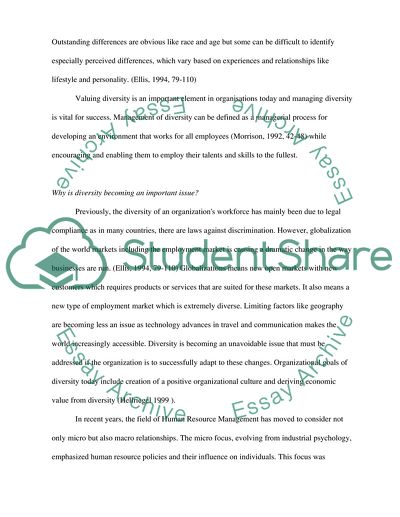Cite this document
(Diversity and Human Resource Debate Essay Example | Topics and Well Written Essays - 2500 words, n.d.)
Diversity and Human Resource Debate Essay Example | Topics and Well Written Essays - 2500 words. Retrieved from https://studentshare.org/sociology/1709954-critically-examine-this-statement-by-the-commissioner-of-human-rights-diversity-is-no-longer-the-sole-province-of-human-resource-but-should-be-part-of-a-sepera
Diversity and Human Resource Debate Essay Example | Topics and Well Written Essays - 2500 words. Retrieved from https://studentshare.org/sociology/1709954-critically-examine-this-statement-by-the-commissioner-of-human-rights-diversity-is-no-longer-the-sole-province-of-human-resource-but-should-be-part-of-a-sepera
(Diversity and Human Resource Debate Essay Example | Topics and Well Written Essays - 2500 Words)
Diversity and Human Resource Debate Essay Example | Topics and Well Written Essays - 2500 Words. https://studentshare.org/sociology/1709954-critically-examine-this-statement-by-the-commissioner-of-human-rights-diversity-is-no-longer-the-sole-province-of-human-resource-but-should-be-part-of-a-sepera.
Diversity and Human Resource Debate Essay Example | Topics and Well Written Essays - 2500 Words. https://studentshare.org/sociology/1709954-critically-examine-this-statement-by-the-commissioner-of-human-rights-diversity-is-no-longer-the-sole-province-of-human-resource-but-should-be-part-of-a-sepera.
“Diversity and Human Resource Debate Essay Example | Topics and Well Written Essays - 2500 Words”, n.d. https://studentshare.org/sociology/1709954-critically-examine-this-statement-by-the-commissioner-of-human-rights-diversity-is-no-longer-the-sole-province-of-human-resource-but-should-be-part-of-a-sepera.


